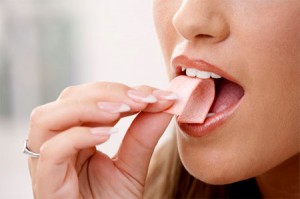Stick It to Tooth Decay
The Sugarless Way
Have you ever been with your grandmother and saw her stick a piece of chewing gum in her mouth right after eating dinner at a cafeteria? You probably just chalked it up to her wanting fresh breath after dinner without another thought about it. But did you know that chewing sugarless gum after meals can prevent tooth decay? No doubt you have probably noticed that when you chew gum, you produce a great amount of saliva. But were you aware that it also helps in combating tooth decay over time?
It’s true, clinical studies have shown that by chewing sugarless gum for 20 minutes after eating helps to prevent tooth decay. How you ask? Obviously chewing sugarless gum produces saliva, but all that saliva being produced, helps in the washing away of food debris within the mouth. It also neutralizes acids that are introduced by bacteria and enables disease-fighting substances. As a bonus, saliva also carries more calcium and phosphate which helps to strengthen the tooth’s enamel.
There are plenty of sugarless gums available with the ADA Seal visible. This means they are only sweetened by non-cavity causing ingredients such as aspartame, sorbitol, mannitol, or aspartame. Chewing gum with sugar also produces a great amount of saliva; the only difference is that the sugar is used by plaque bacteria produces tooth decaying acids.
By no means should chewing gum be a replacement for brushing and flossing as recommended by your dentist and the ADA. Chewing gum after a meal merely provides another tool in how one can continually and effectively maintain a healthy mouth. So the next time your grandmother has a stick of gum after dinner, join along in combating tooth decay.

